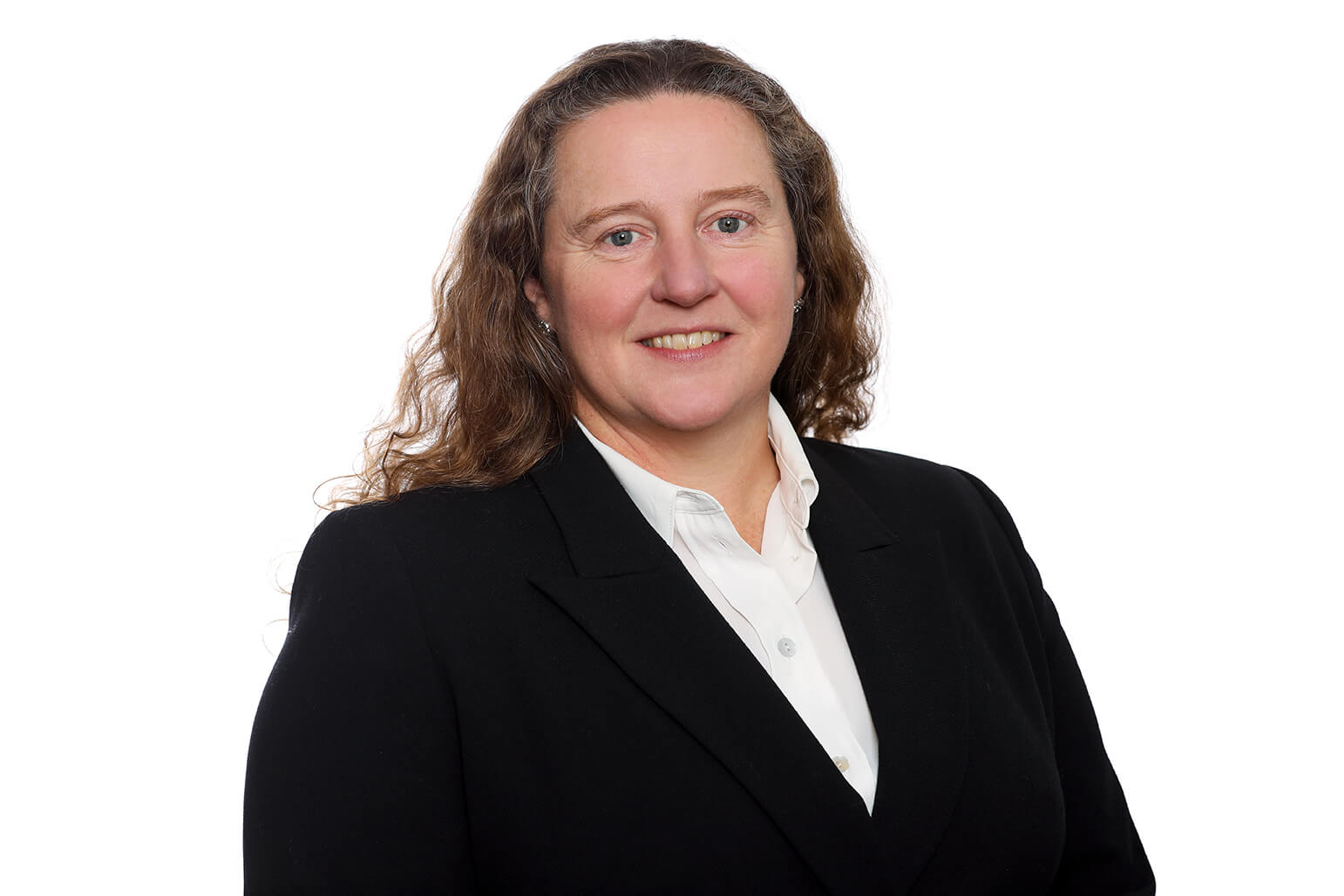National View
Average arable and pasture land values across England and Wales increased marginally in the first quarter of 2023. Values have now risen every quarter in the past two years. Arable land values increased by 0.4% during Q1 2023 to reach £9,272/acre, and pasture land values rose by 0.5% to £7,511/acre.
In the 12 months to Q1 2023, arable land values have increased by 4.3% (£383/acre) and pasture land by 3.4% (£250/acre). Compared to the rates of growth seen at the start of last year, both average pasture and arable land value growth have slowed considerably.
Growth has been particularly strong over the last two years. When annualised over a two-year period, pasture land values have increased by a healthy 5.5% and arable by 4.8%. In this time, the value of lower quality land has risen at a faster pace than average values, driven by demand from natural capital investors for environmental and biodiversity ventures. Secondary and tertiary pasture land values have seen 8.7% annualised growth in the past two years, while secondary and tertiary arable land have increased by 6.1% when annualised over the same period.
£9,272
per acre
Average
arable land
value in Q1
Q-ON-Q
CHANGE
0.4%
4.3%


y-ON-y
CHANGE
£7,511
per acre
Average
pasture land
value in Q4
Q-ON-Q
CHANGE
0.5%
3.4%
y-ON-y
CHANGE


Farmland
Market Update
Q1 2023
Key data and expert commentary
outlining trends in the farmland market

“Agricultural land has continued to prove its ability to grow steadily over the longer-term.”
FIGURE 5
Stabilising commodity prices
Source: Carter Jonas, AHDB, Farmers Weekly, Defra, ONS, OPEC
Input
Outputs










Crude Oil
Fertiliser
Red Diesel
Feed Wheat
Oilseed
Rape
Milk
Beef
Pork

CRUDE OIL
Unit
Latest data
Date
Quarterly change
Annual change
£/barrel
64.6
March '23
-1.3%
-25%

Fertiliser
Unit
Latest data
Date
Quarterly change
Annual change
£/tonne
465.2
March '23
-33.6%
-27.6%

Red Diesel
Unit
Latest data
Date
Quarterly change
Annual change
pence/litres
96.3
Mar '23
-9.8%
0.3%

Feed Wheat
Unit
Latest data
Date
Quarterly change
Annual change
£/tonne
218.3
March '23
-19.3%
-24.2%

oilseed rape
Unit
Latest data
Date
Quarterly change
Annual change
£/tonne
423
March '23
-19.9%
-31.1%

MILK
Unit
Latest data
Date
Quarterly change
Annual change
pence/litre
48.1
Feb '23
-5.9%
33.0%

BEEF
Unit
Latest data
Date
Quarterly change
Annual change
pence/kg dw
486.9
March '23
9.5%
18.2%

Pork
Unit
Latest data
Date
Quarterly change
Annual change
pence/kg dw
212.1
March '23
5.4%
43.7%


Click a location for
a local overview










East of England
Arable
Pasture
£6,850
£6,000
£10,850
£9,500
£8,850
£7,000
0.6%
1.4%
4.1%
2.2%
Low
£ / acre
Prime
£ / acre
Average
£ / acre
Quarterly %
Annual %
East of England land values
North West
Arable
Low
£ / acre
Prime
£ / acre
£ / acre
Quarterly %
Annual %
Average
£8,000
£6,500
£12,000
£9,500
£10,000
£8,000
0.0%
0.0%
5.3%
6.7%
Pasture
EMAIL DEBORAH
01539 814914
Partner
Deborah Lund

North West land values
Wales
Arable
Low
£ / acre
Prime
£ / acre
£ / acre
Quarterly %
Annual %
Average
£8,250
£4,250
£9,500
£8,500
£8,500
£6,500
0.0%
0.0%
0.0%
0.0%
Pasture
EMAIL Hugh
01248 360417
Partner
Hugh O’Donnell

Wales land values

North East
Arable
Low
£ / acre
Prime
£ / acre
£ / acre
Quarterly %
Annual %
Average
£6,200
£4,250
£8,500
£6,500
£7,200
£5,750
0.0%
0.0%
2.9%
0.0%
Pasture
EMAIL Sam
01423 707801
Associate Partner
Sam Johnson

North East land values

Yorkshire and the Humber
Arable
Low
£ / acre
Prime
£ / acre
£ / acre
Quarterly %
Annual %
Average
£7,850
£5,350
£10,600
£7,100
£8,850
£6,850
0.0%
0.0%
1.1%
1.5%
Pasture
EMAIL Sam
01423 707801
Associate Partner
Sam Johnson


Yorkshire and the
Humber land values
East Midlands
Arable
Low
£ / acre
Prime
£ / acre
£ / acre
Quarterly %
Annual %
Average
£8,000
£6,500
£11,000
£9,000
£8,800
£7,750
0.6%
0.0%
10.0%
10.7%
Pasture
East Midlands land values
West Midlands
Arable
Low
£ / acre
Prime
£ / acre
£ / acre
Quarterly %
Annual %
Average
£9,250
£7,000
£13,000
£10,000
£11,000
0.0%
0.0%
10.0%
5.9%
Pasture
EMAIL ANGHARAD
01213 899685
Surveyor
Angharad Llewellyn

West Midlands land values
South East
Arable
Low
£ / acre
Prime
£ / acre
£ / acre
Quarterly %
Annual %
Average
£9,250
£7,750
£11,500
£9,250
£10,250
£8,750
2.5%
2.9%
2.5%
2.9%
Pasture
EMAIL Andrew
07880 084633
Partner
Andrew Chandler


Wales

West Midlands

East Midlands

South west

South east

East of england

Yorkshire & the humber

North east

North west
Get in touch
Click a trend for more info
EMAIL MARK
01223 346628
Partner
Mark Russell


EMAIL MARK
01223 346628
Partner
Mark Russell






South West
Arable
Low
£ / acre
Prime
£ / acre
£ / acre
Quarterly %
Annual %
Average
£9,000
£6,000
£12,000
£10,000
£10,000
£8,000
0.0%
0.0%
2.6%
0.0%
Pasture
EMAIL David

01823 428591
Partner
David Hebditch

South West land values
EMAIL Andrew
07880 084633
Head of Agency
Andrew Chandler



In the first quarter of 2023, new, publicly marketed farmland supply totalled 7,468 acres. This is 102.8% higher than the supply in the same quarter in 2022, and 40.6% greater than the 5-year average for Q1. In recent years, supply in the first quarter has been around 5 times lower than the level of new supply that comes to the market in Q2 or Q3, and so these figures do not necessarily predict the market for the coming year. But, with a healthy pipeline of launches coming in the next few weeks and new supply typically rocketing in the spring, we expect this initial uptick in available land to build momentum in the next quarter. With an increasing range of buyers in the market, we expect this to be matched by demand, which remains strong for land of all types and quality.
However, supply continues to fall below longer-term averages. Against a 10-year average of 7,960 acres in Q1, newly marketed farmland supply in Q1 2023 was down 6.2%. Continued low levels of stock have helped drive the consistent, steady rises in land values seen over the last couple of years.
Agricultural land with an attractive residential element remains sought after, despite a struggling residential sales market. Lifestyle land values, in particular, continue to push upwards, bolstered by strong demand for country homes with quality amenity land. Although they were stagnant across the quarter, lifestyle land values across England and Wales have increased by 1.1% annually. In contrast, average house prices have decreased by 3.1% in the year to March 2023 (Nationwide). In the past two years, lifestyle land values have increased by a substantial 19.9%, whereas average house prices have risen by a slower 10.8%. Although lifestyle land growth has decelerated in recent months, this suggests that land, and its lack of availability, adds a level of stability to investments and the pressures on the residential market have had less influence.
New year launches offer steady supply
Commodity price trends

Sheep
Chicken

£900
£2,250
£1,575
0.0%
46.5%
Hill
£500
£1,500
£1,000
0.0%
0.0%
Hill
£1,700
£2,800
£2,150
0.0%
2.4%
Hill
£10,700
£13,750
£12,250
0.0%
0.0%
Lifestyle
£1,600
£3,700
£2,600
0.0%
0.0%
Hill
£10,500
£15,500
£13,000
0.0%
0.0%
Lifestyle
£11,000
£13,000
£12,000
0.0%
4.3%
Yorkshire Wolds
£13,250
£25,000
£16,750
0.0%
0.0%
Lifestyle
£7,500
£12,000
£9,000
0.0%
0.0%
Silts and Fen
£25,000
£16,000
0.0%
6.7%
Lifestyle
£13,500
£22,000
£16,750
0.0%
0.0%
Lifestyle
£7,500
£12,250
£9,250
0.0%
0.0%
Silts and Fen
£15,000
£30,000
£20,000
0.0%
0.0%
Lifestyle

SHEEP
Unit
Latest data
Date
Quarterly change
Annual change
pence/kg dw
541.5
March '23
-0.4%
-4.8%

CHICKEN
Unit
Latest data
Date
Quarterly change
Annual change
pence/kg dw
360.0
February '23
4.5%
26.3%
EMAIL SOPHIE
020 7493 0685
Senior Research Analyst
Sophie Davidson



FIGURE 2: Annualised Growth of Average Land Values in England and Wales
FIGURE 3: Annual Publicly Marketed Farmland Supply
FIGURE 2
Annualised Growth of Average Land Values in England and Wales
FIGURE 1
FIGURE 1: Average Land Values in England and Wales
South East land values
Input prices have dropped dramatically from the spike last year, but longer-term price inflation persists. A year on from Russia’s invasion of Ukraine, global markets are stabilising and input prices are moving closer to pre-war figures. In particular, the extension of the Black Sea Grain Initiative, allowing Ukraine to ship outputs from its Black Sea Ports, has relieved pressure on fertiliser and grain markets. For UK grain producers, rather than buyers for feed, this recovery in competition ends a period of inflated income.
Wheat ended March at £218.3/tonne, 24.2% down year-on-year and 19.3% lower than the previous quarter. Fertiliser (ammonium nitrate, imported), which saw the greatest jump in price of all commodities in 2022, fell 33.6% in the three months to March to £465.2/tonne. Against Q1 2022 (February figure used as no data available for March), prices are down 27.6%.
Wholesale energy prices have eased, too. Crude oil is now below pre-Ukraine war levels, falling to £64.6/barrel in March. This is 25.0% lower than its value at the end of Q1 2022, and 32.4% below its peak seen in June 2022. The price of red diesel is now 26.4% lower than its peak in July, but marginally higher (0.3%) than Q1 2022. Across the quarter, crude oil prices have fallen 1.3% and red diesel by 9.8%.
FIGURE 4: Cumulative Publicly Marketed Farmland Supply
FIGURE 3: Year-to-Date Publicly Marketed Farmland Supply


Cumulative Publicly
Marketed Farmland Supply
FIGURE 4
Year-to-Date Publicly
Marketed Farmland Supply
FIGURE 3
Year-to-Date Publicly
Marketed Farmland Supply
FIGURE 3
Cumulative Publicly
Marketed Farmland Supply
FIGURE 4
£13,000
£9,000
Average Land Values in
England and Wales
Annualised Growth of Average Land Values in England and Wales


Agricultural land has continued to prove its ability to grow steadily over the longer-term. In the ten years to Q1 2023, average pasture and arable land values have seen robust annualised growth rates of 3.5% and 2.7% respectively. Over a 15-year period, growth has been even stronger, with pasture land increasing at an annualised rate of 3.9% and arable by 5.4%.
Although the economic outlook for the UK has improved recently, the prolonged downturn continues to challenge the market. Notably, with the Bank of England’s decision in March to raise interest rates for the 11th time in 18 months to 4.25%, finance is becoming increasingly expensive and investors are less inclined to borrow.
Sustained inflation also continues to impact the profitability of the agricultural sector. However, forecasters expect inflation to decelerate significantly over the coming months (to under 4% by Q4 this year on the CPI measure, according to the Treasury-compiled consensus). Interest rates should also now be at, or close to, the peak of the current cycle, and so pressures look set to ease. Against the current economic backdrop, it is encouraging that market values across England and Wales have continued to move upwards and demand remains robust.
Carter Jonas continues to monitor the changing nature of the farmland market and the influences on land values in England and Wales.
Defra provided more clarity on funding for farmers this quarter following a prolonged period of ambiguity around the phasing out of direct payments and the introduction of new Environmental Land Management schemes (ELMs). The government announced six new standards for the Sustainable Farming Incentive in addition to the three introduced in 2022. It also detailed new payments available under an enhanced Countryside Stewardship scheme. Further, the government published its response to the Biodiversity Net Gain consultation with additional guidance. Farmers now find themselves faced with several options and are weighing up the costs involved when planning for the future of their businesses.
Food shortages captured the headlines again, highlighting vulnerabilities in the UK’s supply chains and reinforcing the need to future-proof domestic production. As the advantages of a stable income through environmental schemes and diversification projects take hold, there are concerns that these competing interests will intensify.
Encouragingly, we are continuing to see strong demand from those purchasing for commercial farming. The number of registered crop and animal production businesses registered in England and Wales increased by a modest, but reassuring, 1.0% in 2022. Demand is also reflected in prime pasture and arable land values, which nudged up again in Q1 (prime pasture by 0.4% and prime arable by 0.3%) and are predominantly driven by demand for quality food production.
Despite these sharp decreases, input prices remain substantially higher than two years ago. Against its values in March 2021 (£271.2/tonne), fertiliser (AN imported) was 71.5% higher in March 2023. Red diesel was 60.6% greater in March than its price two years earlier (59.9p/litre), and crude oil was up 38.7% (from £46.6/barrel in 2021). Wheat prices have increased by a more moderate 13.5% over two years (from £192.4/tonne in 2021), but still enough to impact profit margins. Historically elevated and volatile input costs have put strain on farming businesses, which are yet to feel much effect from price falls.
However, some output prices, notably beef and pork, have seen sizable annual increases. In the 12 months to March, beef and pork values have risen by 18.2% and 43.7% respectively. Across the quarter, beef has seen a greater increase of 7.3%, whereas pork has grown by 2.8%. The beef market has been boosted by strong exports earlier in the quarter (AHDB), which are expected to continue into the coming months. Higher domestic production, reflected in a 7.2% annual increase in steer slaughters (Defra), coupled with a tight global beef market underpins increasing prices. Pork, on the other hand, has seen a 16.7% fall in slaughters year-on-year (clean pigs, Defra), putting upward pressure on values.
Chicken has also seen a jump in price, increasing 4.5% in the three months to February and 26.3% over 12 months. The threat from bird flu has continued to challenge the sector this quarter. Millions of birds have been culled over the last year, constraining supply.
Other outputs have seen prices decrease in Q1. Domestic oilseed rape has fallen at the fastest rate, dropping by 19.3% over the quarter to £423.0/tonne. Prices have been decelerating since their peak in April 2022, during which time the value has fallen by a significant 43.5%.
There has been great variability in sheep prices over the quarter, with prices dropping to 505.9p/kg in February and rising to 541.5p/kg in March, influenced by religious festivals and seasonal demand. Over the quarter, there was an overall increase of 0.4%. Yet, year-on-year, the price has decreased by 4.8%. Against Q1 2022, slaughters have increased by 22.5% (sheep and lambs, Defra).
After increases in milk prices accelerated through 2022, prices have since fallen in Q1 as almost all the major milk processors announced price cuts. In the three months to February, prices declined by 5.9%. Farmers Weekly reported the average cost of production to be 43-45p/litre, with some dairy farmers making a loss. An increase in milk supply and reduced consumption is cited as the reason for the decrease.
Although many input costs are now coming down, the picture for outputs is more mixed, with some farmers benefiting from higher output prices but others seeing continued falls, depending on the type of production.
Farmland
Market Update
Q4 2022
Key data and expert commentary
outlining trends in the farmland market

(Please view desktop version for graphs)

£9,233
per acre
Average
arable land
value in Q4
Q-ON-Q
CHANGE
1.3%
4.5%


y-ON-y
CHANGE

£7,472
per acre
Average
pasture land
value in Q4


Q-ON-Q
CHANGE
0.3%
4.3%
y-ON-y
CHANGE
Source: Carter Jonas, AHDB, Farmers Weekly, DEFRA, ONS, OPEC
Commodity price trends
Stabilising commodity prices
Inputs
Outputs












Crude Oil
Fertiliser
Red Diesel
Milk
Beef
Feed Wheat
Oilseed Rape
Pork
Sheep
Chicken

CRUDE OIL
Unit
Latest data
Date
Quarterly change
Annual change
£/barrel
64.6
March '23
-1.3%
-25%

Fertiliser
Unit
Latest data
Date
Quarterly change
Annual change
£/tonne
465.2
March '23
-33.6%
-27.6%

Red Diesel
Unit
Latest data
Date
Quarterly change
Annual change
pence/litres
96.3
Mar '23
-9.8%
0.3%

Feed Wheat
Unit
Latest data
Date
Quarterly change
Annual change
£/tonne
218.3
March '23
-19.3%
-24.2%

OILSEED RAPE
Unit
Latest data
Date
Quarterly change
Annual change
£/tonne
423
March '23
-19.9%
-31.1%

MILK
Unit
Latest data
Date
Quarterly change
Annual change
pence/litre
48.1
Feb '23
-5.9%
33.0%

BEEF
Unit
Latest data
Date
Quarterly change
Annual change
pence/kg dw
486.9
March '23
9.5%
18.2%

Pork
Unit
Latest data
Date
Quarterly change
Annual change
pence/kg dw
212.1
March '23
5.4%
43.7%

SHEEP
Unit
Latest data
Date
Quarterly change
Annual change
pence/kg dw
541.5
March '23
-0.4%
-4.8%

CHICKEN
Unit
Latest data
Date
Quarterly change
Annual change
pence/kg dw
360.0
February '23
4.5%
26.3%
Tap a trend for more info

Tap a location for
a local overview












WEST MIDLANDS

NORTH EAST

SOUTH WEST

WALES

NORTH WEST

YORKSHIRE & HUMBER

EAST MIDLANDS

EAST OF ENGLAND

SOUTH EAST
2019


EMAIL DEBORAH
CLOSE

01539 814914
Partner
Deborah Lund
View on desktop for a full overview
North West land values
2019
CLOSE

View on desktop for a full overview
01423 707801
Associate
Sam Johnson


EMAIL Sam
North East land values
2019
CLOSE

View on desktop for a full overview
01423 707801
Associate Partner
Sam Johnson


EMAIL Sam
Yorkshire & The Humber land values
2019
CLOSE

View on desktop for a full overview

EMAIL Hugh
01248 360417
Partner
Hugh O' Donnell

Wales land values
2019

CLOSE

View on desktop for a full overview
EMAIL mark
01223 346628
Partner
Mark Russell

East Midlands land values
2019
CLOSE

EMAIL EDWARD
01213 899685
Surveyor
Angharad Llewellyn

View on desktop for a full overview
West Midlands land values
2019
CLOSE

View on desktop for a full overview

EMAIL mark
01223 346628
Partner
Mark Russell

East of England land values
2019
CLOSE

View on desktop for a full overview

07880 084633
Partner
Andrew Chandler

EMAIL Andrew
South East land values
2019
CLOSE

View on desktop for a full overview

EMAIL david
01962 833386
Partner
David Hebditch

South West land values

Get in touch
020 7493 0685
Senior Research Analyst
Sophie Davidson

EMAIL SOPHIE

EMAIL Andrew

07880 084633
Head of Agency
Andrew Chandler
